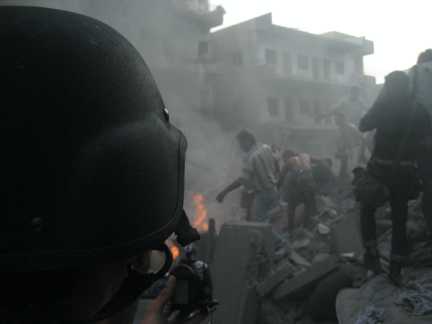2020-2021 HTDTWT seminar Ghalya Saadawi: Witness
Participating students in their first year: Izaro Ieregi, Dandelion Eghosa, Jan-Pieter ‘t Hart, Krzystof Baginski, Maoyi(Peixuan Qui), Elisa Giuliano, Bambi van Balen; and in their second year: Csilla Klenyanszki, Kari Rosenfelt, Raul Sebastian Silva, Mia van den Bos.
The seminar from month to month
INTRODUCTION: Witness
In the seminar, Witness, we inspect histories and theories of witnessing, specifically in relation to questions of violence and representation, and debate and challenge ideas of the impossibilities of and injunctions to avoid representation after catastrophic events. In introducing 20th century theories (legal, political, ontological, literary) around the figure of the witness, we pause at 18th century connections to the sublime and the unrepresentable, and move towards 21st c. formulations of surveillant and material witnessing. We seek to understand the conditions, economic and political, that produce different eras and conceptions of witnessing and its concomitant associations (memory, testimony, trauma, etc.) The seminar will look at formal questions around the image/technologies of witnessing; the relationship between witnessing, testimony and memory, and the contradictions and shortcomings of these; witnessing’s imbrication in liberal regimes of human rights following the Second World War and Cold War; and its historical transformations including the fora witnessing has occupied and/or abandoned.
*Tentative bibliography. Will be narrowed and organized into recommended and required reading for five seminars. List of homework screenings to be added.
Agamben, Giorgio. Remnants of Auschwitz: The Witness and the Archive. Translated by Daniel Heller-Roazen. New York: Zone Books, 2002: 15-86.
Ariella, Azoulay A. The Civil Contract of Photography. New York: Zone Books, 2008. Introduction, Chapters I and II.
Didi-Huberman, Georges. Images in Spite of All: Four Photographs from Auschwitz. Translated by Shane B. Lillis. Chicago: University of Chicago Press, 2008. Selections.
Eshun, Kodwo, and Ros Gray, eds. ”The Militant Image: A Ciné‐Geography: An Editor’s Introduction.” Third Text, 25, no. 1 (2011): 1-12, and selections.
Felman, Shoshana and Dori Laub. Testimony: Crises of Witnessing in Literature, Psychoanalysis and History. New York: Routledge, 1992. Selections.
Hartley, George. The Abyss of Representation: Marxism and the Postmodern Sublime. Durham NC: Duke University Press, 2003. Selections.
Herscher, Andrew. "Surveillant Witnessing: Satellite Imagery and the Visual Politics of Human Rights." Public Culture 26 2 (2014): 469-500.
Gaines, Jane and Michael Renov, eds. Collecting Visible Evidence. Minneapolis: University of Minnesota Press, 1999. Selections.
Guerin, Frances and Roger Hallas, eds. The Image and the Witness: Trauma, Memory and Visual Culture. London: Wallflower Press, 2007. Introduction.
Kant, Immanuel. “Second Book: Analytic of the Sublime.” In Critique of the Power of Judgment. Edited and translated by Paul Guyer. Cambridge: Cambridge University Press, 2003. Selections.
Lesage, Julia. “Godard and Gorin’s Left Politics, 1967-1972.” Jump Cut 28 (April 1983): 51-76.
Mbembe, Achille. “Necropolitics.” Translated by Libby Meintjes. Public Culture 15 no.1 (2003): 11–40.
Minh-ha, Trinh T., “Documentary is/Not a Name,” October Vol. 52, Spring 1990, 76-98.
Sadek, Walid. Ruin to Come: Essays from a Protracted War. Pully, Switzerland: Motto Books, and Taipei: Taipei Biennial, 2016. Selections.
Sharpe, Christina. In the Wake: On Blackness and Being. Durham, NC: Duke University Press, 2016. Selections
Schuppli, Susan. Material Witness: Media, Forensics, Evidence. Cambridge MA: MIT Press, 2020. Selections.
Toscano, Alberto and Jeff Kinkle. Cartographies of the Absolute. London: Zero Books, 2015. Introduction and chapter 1.
Wieviorka, Annette. The Era of the Witness. Translated from the French by Jared Stark. Ithaca and London: Cornell University Press, 2006: 96-144.
Winter, Yves. “Violence and Visibility,” New Political Science 34, no. 2 (June 2012): 196-202.

